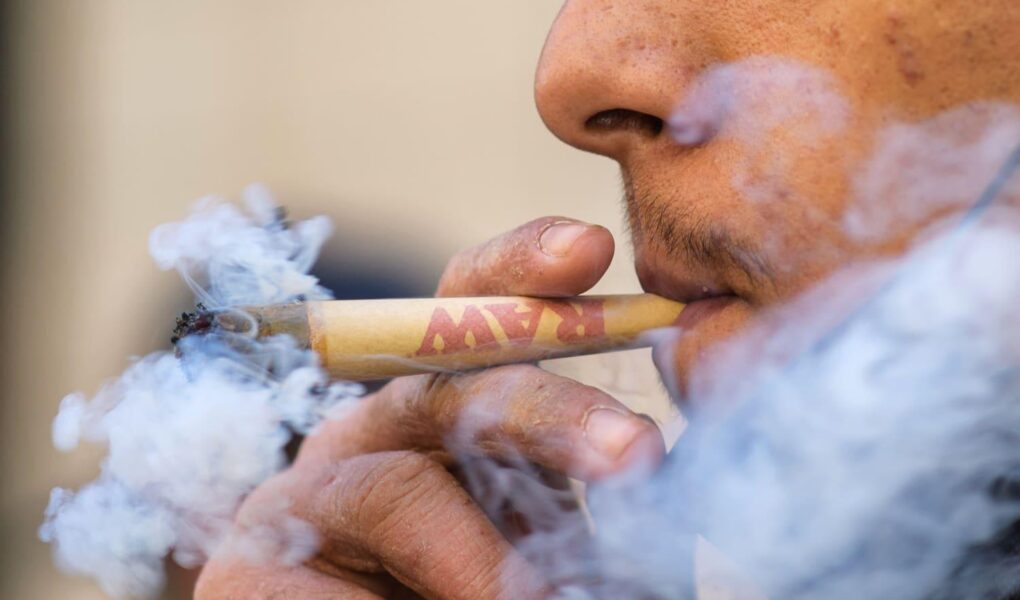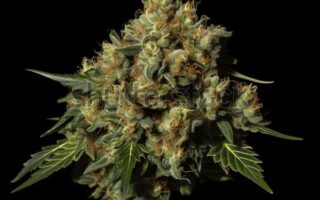Title: The Green Thread of History: Tracing Humanity’s Relationship with Cannabis
Introduction:
From the ceremonial rites of ancient tribes to the relaxed social gatherings of modern times, the act of smoking cannabis has woven itself into the fabric of human culture for millennia. Yet, as we inhale the smoke and exhale the lingering scents of this leafy plant, a fascinating question arises: how long have humans actually been engaging with this psychoactive herb? To answer this, we must journey through time, exploring an intricate tapestry that spans continents and cultures, each thread rich with stories of spirituality, medicine, and recreation. Delving into archaeological findings, historical texts, and cultural practices, we can uncover the origins of cannabis use and its evolution through the ages. Join us as we illuminate the timeline of humanity’s relationship with this enigmatic plant, revealing not just when we started smoking weed, but how it has shaped our societies along the way.
Table of Contents
- The Ancient Roots of Cannabis Use in Human History
- Cultural Significance and Ritual Practices Surrounding Marijuana
- From Medicine to Recreation: The Evolution of Cannabis Consumption
- Understanding the Modern Landscape of Legalization and Use
- Q&A
- The Conclusion
The Ancient Roots of Cannabis Use in Human History
The use of cannabis for various purposes can be traced back thousands of years, highlighting its significance in human culture and medicinal practices. Archaeological evidence suggests that as early as 5000 BCE, ancient cultures in Central Asia were utilizing hemp for textiles, food, and, notably, for psychoactive purposes. Early references in texts such as the Chinese Pen Ts’ao Ching describe the use of cannabis in herbal medicine, showcasing its diverse applications. Many ancient civilizations, including the Egyptians and Scythians, also recognized the plant’s powerful effects, using it in religious rituals and spiritual ceremonies.
As cannabis spread across different regions, its uses evolved, intertwining with various traditions and belief systems. In ancient India, cannabis held a sacred status, forming an essential component of spiritual practices and Ayurvedic medicine. The connection between cannabis and the divine was celebrated in texts like the Vedas, where it was referred to as a source of happiness and medicinal relief. The following are some key historical points regarding cannabis use:
- 5000 BCE: Cannabis seeds and fibers found in ancient Central Asia.
- 3000 BCE: Use of cannabis mentioned in Chinese medicinal manuscripts.
- 1500 BCE: Cannabis used in ancient Indian religious practices.
- 1000 BCE: Cannabis incorporated into Egyptian medicinal and spiritual rituals.
Cultural Significance and Ritual Practices Surrounding Marijuana
Cultural practices surrounding marijuana date back thousands of years, intertwining with the spiritual and daily lives of various societies. In ancient cultures, cannabis was not only revered for its psychoactive properties but also held significant medicinal and ceremonial importance. For instance, the Scythians, a nomadic people of Central Asia, are known to have utilized the plant in rituals as far back as 500 B.C. They would burn the flowers in a tent and inhale the smoke during sacred ceremonies, believing it connected them to the divine. Similarly, in ancient China, cannabis was used in traditional medicine, attributed to its analgesic and anti-inflammatory effects, showcasing the plant’s integral role in health and spirituality long before modern applications emerged.
As civilizations evolved, so did their rituals and uses surrounding marijuana. In regions such as India and Jamaica, marijuana has been incorporated into cultural and religious practices, with each community attributing unique spiritual beliefs to its consumption. In India, for example, cannabis is often associated with Lord Shiva, and is enjoyed during festivals like Maha Shivaratri as a means of attaining higher consciousness and spiritual connection. In contrast, Rastafarian culture in Jamaica regards marijuana as a sacramental herb, used during religious ceremonies to promote deep meditation and communion with God. Through these diverse rituals, the cultural significance of marijuana continues to thrive, influencing not just spiritual practices but also shaping social identities around the world.
From Medicine to Recreation: The Evolution of Cannabis Consumption
The journey of cannabis consumption unveils a fascinating narrative, beginning in ancient times when its therapeutic properties were first discovered. Archaeological evidence indicates that as far back as 500 BC, cannabis was used in various cultures for medicinal purposes. Ancient Chinese texts refer to its use for treating ailments such as chronic pain and digestive issues. Over time, this plant transcended its medicinal roots, becoming intertwined with spiritual rituals and social practices in various civilizations, including the Greeks and Romans. The allure of cannabis was not merely therapeutic; it also served as a conduit for heightened creativity and relaxation, slowly evolving into a recreational substance.
As we moved into the modern era, cannabis consumption took on new forms and meanings, reflecting societal changes and legal landscapes. Today, with an increasing number of regions legalizing its use, cannabis is consumed in diverse ways—ranging from traditional smoking to edibles and oils. This transformation signifies a broader acceptance and recognition of cannabis not just as a medicine but as an integral part of leisure culture. Key aspects of this evolution include:
- Modern legalization efforts
- Changing perceptions of health and wellness
- Innovative consumption methods
- Emerging research on benefits and risks
Understanding the Modern Landscape of Legalization and Use
The landscape of cannabis legalization has evolved dramatically over recent years, reflecting shifts in societal attitudes and scientific understanding. From the early days of prohibition to the contemporary move towards decriminalization and legalization, the journey is both complex and fascinating. Key developments include:
- Changing Legislation: Numerous countries and states are revising their laws to permit medical and recreational use.
- Public Perception: Increasing awareness regarding the medicinal benefits of cannabis is changing public opinion in favor of legalization.
- Economic Impact: The burgeoning cannabis industry generates significant tax revenue, creating jobs and boosting local economies.
This shift is not just confined to individual nations; it is part of a broader global movement. Nations such as Canada and Uruguay have pioneered full legalization, while others closely monitor the outcomes of these initiatives. Important trends influencing this change include:
- Medical Research: Growing studies highlight cannabis’s efficacy in treating various health conditions, fostering acceptance.
- Social Justice: Advocacy for the expungement of cannabis-related criminal records reflects a renewed focus on social equity.
- Market Dynamics: The emergence of cannabis businesses has led to regulatory frameworks aimed at ensuring safe consumption.
Q&A
Q&A: How Long Have Humans Been Smoking Weed?
Q1: When did humans first start using cannabis?
A: Cannabis use dates back thousands of years. The earliest recorded evidence suggests that humans were utilizing the plant for its psychoactive properties and medicinal applications around 5000 years ago in ancient China. Archaeological findings in Central Asia further indicate that people were cultivating and smoking cannabis as early as 3000 BCE.
Q2: What evidence do we have of ancient cannabis use?
A: Ancient texts, artifacts, and historical accounts provide insight into cannabis use. In China, the Pen Ts’ao Ching, a pharmacopoeia written around 2737 BCE by Emperor Shen Nong, mentions cannabis’s medicinal benefits. Similarly, archaeological digs in ancient burial sites, such as those in modern-day Romania and Russia, have uncovered charred cannabis seeds and remnants, suggesting ritualistic smoking practices.
Q3: Did different cultures use cannabis in similar ways?
A: While the foundational use of cannabis as a psychoactive substance can be observed across different cultures, the practices varied significantly. In ancient India, for instance, it was integrated into spiritual practices and rituals, often associated with the deity Shiva. Conversely, in the Middle East, it was used for both recreational enjoyment and as a component of traditional medicine.
Q4: How did cannabis smoking spread across the globe?
A: The spread of cannabis smoking can be traced along trade routes and through cultural exchanges initiated by nomadic tribes. As trade flourished, especially during the Silk Road era, cannabis traveled from Asia to the Middle East, Europe, and later the Americas. Each region adapted its use based on cultural and social contexts, from medicinal to recreational usage.
Q5: What role did cannabis play in ancient societies?
A: In ancient societies, cannabis served multiple purposes. Aside from its psychoactive effects, it was valued for its fibers, used for textiles and ropes. In various cultures, cannabis also played a role in religious and spiritual rituals, enhancing meditation and connecting worshipers with the divine. Its medicinal properties were recognized and it was used to alleviate ailments.
Q6: When did smoking cannabis specifically become common?
A: While the consumption of cannabis in various forms has ancient roots, the act of smoking it may have become more prominent around the 10th century CE. Historical records from the Islamic Golden Age indicate that cannabis was smoked in pipes, and this practice spread into Europe and the Americas over the subsequent centuries.
Q7: Is there any historical documentation about notable figures and cannabis?
A: Yes, throughout history, notable figures have been linked to cannabis use. For example, the 19th-century writer and poet Charles Baudelaire wrote about cannabis in his poetry, referring to it as an inspiration. Additionally, various historical texts note the use of cannabis by figures in the arts, sciences, and politics, highlighting its influence across different realms of society.
Q8: How has the perception of cannabis changed over time?
A: Over the centuries, perceptions of cannabis have fluctuated dramatically. In many ancient cultures, it was revered and widely accepted. The 20th century brought a significant shift, especially in Western societies, where cannabis faced stigmatization and criminalization. However, the recent wave of legalization efforts in various parts of the world marks a return to its historical roots as a commonly accepted plant with both medicinal and recreational uses.
Q9: What does the future hold for cannabis use?
A: The future of cannabis use appears promising, with ongoing research and shifting societal attitudes suggesting a potential resurgence in its acceptance. As more countries reconsider their cannabis policies and as scientific studies continue to uncover its benefits, it is likely that both recreational and medicinal use will expand, leading to a deeper understanding of this ancient plant.
Q10: can we pinpoint a definitive start to human cannabis use?
A: While we can’t pinpoint an exact start, it is clear that humans have been interacting with cannabis in various forms for over 5,000 years. Its journey from ancient times to modern-day continues to evolve, influenced by culture, legislation, and research, making cannabis a fascinating subject of study in human history.
The Conclusion
In the tapestry of human history, the use of cannabis weaves a rich and complex narrative that stretches back thousands of years. From its ancient origins as a sacred plant in rituals to its contemporary role in personal wellness and recreation, the story of cannabis smoking is one of cultural evolution and societal transformation. As we reflect on the enduring presence of this plant in human life, we gain insights not only into our relationship with nature but also into the shifting perceptions that continue to shape our world today. Whether seen as an ancient healer or a modern-day pastime, the allure of cannabis endures, inviting us to explore its past, present, and future. As we move forward, one thing remains clear: the bond between humans and cannabis is a journey that is still unfolding, ripe with potential for what lies ahead.



